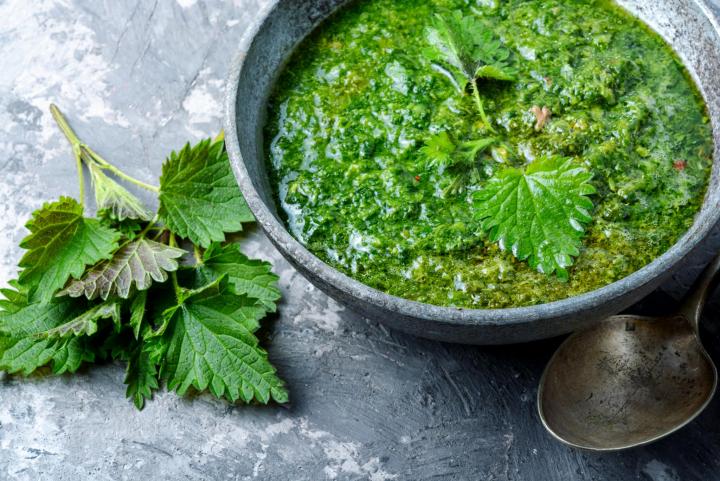
Photo Credit
Madeleine Steinbach/Getty Images
Subhead
Benefits of Stinging Nettle in the Kitchen and Garden
More Like This
We have these nettles all over the property. Since I suffer from arthritis and other chronic pain, I'm going to grab my gloves and go out right now to harvest some. I'm interested in trying the nettle tea. If it works at easing my pain, I will forever sing the praises of this nasty plant
Dock leaves to relieve sting of nettle?
My grandmother would use an infusion of Stinging Nettle and Witch Hazel to rub on her arthritis. After some research, I use the Native American version of Stinging Nettle leaves steeped in boiling water. To treat my gout. Use only the liquid and keep refrigerated. A friend has me make it for her to use as a topical for her Rheumatoid Arthritis.
I use stinging nettle pills for allergies. I am franky stunned there was no mention of them being used in this way because it is the most gentle and effective allergy remedy I have ever tried.
I am an EMT, and I also am a home health nurse. I have a severe problem with recurring kidney stones. I read that making tea from fresh picked stinging nettle leaves helps clear up kidney stones... i am willing to try ANYTHING as i have passed 3 in the last 5 days. I would pay a million dollars to find them. Or buy some fresh!!!! My email is included.. :'(
For that $1 million I can ship you all.you want ;)
I'm not a medical professional or herbalist, Angela, though I have read that nettles have a history of use in urinary-tract and other problems. http://bit.ly/Zmn9Nv Make sure you check with your own healthcare provider.
You might try growing your own fresh nettles (http://amzn.to/Zml3wT), buying dried-nettle tea or capsules, or even buying some fresh http://bit.ly/ZWHMvx.
Good luck!
Nettles are surprisingly rare in my area (argh) so I have to resort to drying them until I have enough to do anything. Would it still be possible to make this using dried leaves or will they lose something important in the dehydration process?
Dried nettles make a nice tea; you could also crumble them and sprinkle them into a soup.
As for "losing something" in the drying process, constituents such as vitamin C, might be reduced; more heat-stable phytocompounds might increase.
By the way, if you dare, you can easily get nettle seeds to grow your own: http://amzn.to/Zml3wT
I'd cut the seedheads before the seed matures, since nettles are notoriously aggressive, spreading via both underground rhizomes and thousands of tiny seeds, especially if they fall onto rich, moist soil.
I got into a patch of stinging nettles a few years ago when weeding my garden. The description above of feeling like I had walked into a hornets nest is right on. Luckily I also grow Jewelweed (Impatiens capensis). I broke a piece off one of my plants and rubs the sap all over the abrasion. I stopped the stingging right away but I was left with the numbing sensation in my hand for 2 or 3 days.
- « Previous
- 1
- 2
- …
- 10
- Next »












Comments